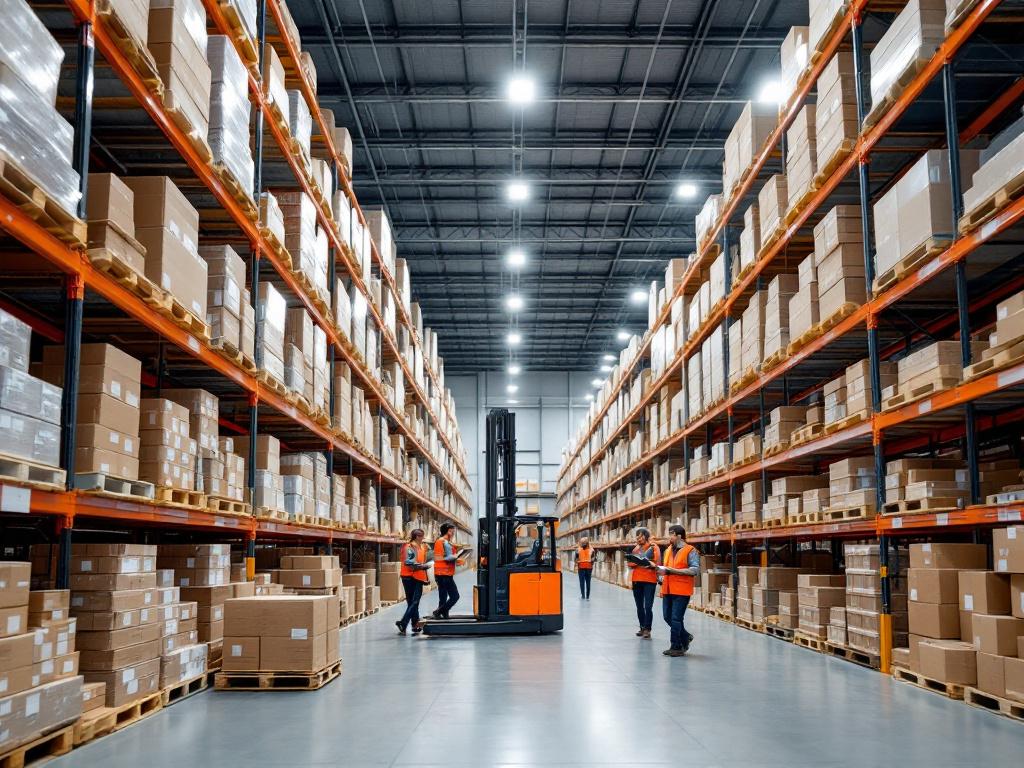The logistics industry is on the brink of a technological revolution. Innovations in artificial intelligence, automation, and real-time tracking are transforming how goods are managed and transported. This article delves into how these technologies are reshaping logistics operations and their implications for the future of supply chains.
The Role of AI in Logistics
The impact of artificial intelligence in logistics is profound, offering various applications that enhance efficiency and effectiveness throughout the supply chain. Predictive analytics stands out as a pivotal use of AI, enabling businesses to forecast demand more accurately. By analyzing historical data, market trends, and seasonal fluctuations, logistics companies can adjust inventory levels and resource allocations proactively, reducing excess stock and minimizing shortages.
AI-driven decision-making systems further streamline supply chain management by helping organizations identify optimal routes, supplier relationships, and inventory management strategies. These systems can process vast amounts of data in real-time, allowing logistics professionals to respond to changes with unprecedented agility. Additionally, integrating AI into operations enhances customer service by providing personalized experiences, responding to inquiries in real time, and even anticipating customer needs based on past behavior.
The operational efficiency gained through AI adoption significantly lowers costs and increases profitability, empowering logistics companies to maintain a competitive edge. As artificial intelligence continues to evolve, its applications in logistics will likely expand, paving the way for smarter, more responsive supply chains that prioritize both efficiency and customer satisfaction.
Automation Technologies Transforming Logistics
The integration of automation technologies in logistics is revolutionizing the industry by enhancing efficiency and reducing operational costs. Automated storage and retrieval systems (AS/RS) simplify the management of inventory, allowing for high-density storage and swift retrieval of goods. These systems minimize human error and optimize space utilization, enabling warehouses to operate with leaner workforces.
In addition to AS/RS, robotics is making significant inroads in warehouse operations. Robotic systems can transport and sort items with remarkable speed and precision, reducing the time taken for order fulfillment. Collaborative robots, or cobots, work alongside human workers, handling repetitive tasks while allowing staff to focus on more complex responsibilities. The synergy of human intelligence and robotic efficiency leads to productivity gains and a safer work environment.
Moreover, drones are emerging as a viable solution for last-mile delivery challenges. These aerial vehicles expedite package transport in urban settings, bypassing traffic congestion and reducing delivery times significantly. The deployments of drones not only promise quicker deliveries but also lower logistics costs by minimizing reliance on ground vehicles. As such, automation technologies are poised to reshape logistics by driving both cost savings and enhanced service delivery.
Real-Time Tracking Innovations
Real-time tracking has emerged as a cornerstone of logistics technology, drastically enhancing visibility and operational efficiency across the supply chain. By incorporating GPS tracking systems and IoT devices, logistics providers can monitor assets in real time, allowing for immediate awareness of shipment locations, estimated arrival times, and other critical metrics. This comprehensive visibility facilitates proactive decision-making, ensuring that stakeholders remain informed throughout the transportation process.
The benefits extend beyond operational efficiency; fleet management becomes more streamlined through real-time tracking. Logistics managers can optimize routes, reduce idle times, and maintain schedules, ultimately leading to decreased operational costs. Furthermore, tracking systems empower fleet operators to maintain vehicle health by monitoring usage patterns, thereby enhancing maintenance and reducing downtime.
Customer satisfaction is also significantly bolstered by real-time tracking. Consumers today expect transparency regarding their purchases, and being able to provide precise delivery updates fosters trust and improves the overall customer experience. Consequently, businesses equipped with advanced tracking capabilities can respond to inquiries instantly and effectively manage expectations, solidifying a competitive edge in an increasingly demanding market. In this landscape, real-time tracking not only reinforces operational integrity but also elevates the customer-centric approach that defines successful logistics companies.
Integrating AI and Automation in Supply Chains
Integrating AI and automation in supply chains is transforming the logistics landscape, driving unprecedented efficiency and accuracy. Companies like Amazon and DHL are leading the charge, utilizing algorithms and robotics to enhance their operations. By employing AI-driven analytics, these organizations can predict demand fluctuations, optimize inventory levels, and improve order fulfillment processes.
In a practical example, Amazon leverages AI in its fulfillment centers, using automated systems powered by machine learning to streamline sorting and packaging. This integration reduces human error, ensuring that orders are accurately prepared and dispatched. Furthermore, DHL has implemented automation in its warehouse operations, utilizing robots for sorting and picking goods, which has significantly cut down processing times and operational costs.
The collaboration between AI and automation paves the way for real-time decision-making, allowing companies to quickly adapt to changes in supply chain dynamics. With intelligent systems analyzing real-time data, logistics providers can enhance their response times, mitigate risks, and bolster customer satisfaction. This seamless integration of technology not only optimizes workflows but also reinforces the foundation for the future of logistics, reflecting a commitment to continuous improvement and innovation.
Future Trends in Logistics Technology
As logistics technology continues to evolve, several key trends are emerging that promise to transform the industry. One significant advancement is in machine learning for predictive logistics. This technology allows companies to analyze vast datasets to forecast demand patterns, enabling proactive supply chain adjustments. For instance, algorithms that can predict freight volume fluctuations will empower businesses to optimize shipping schedules and reduce costs.
Another promising trend is the development of sophisticated automation systems. Warehouses are increasingly adopting autonomous vehicles, drones, and robotics to enhance efficiency in sorting, packing, and shipping. These systems not only speed up operations but also minimize human error, thus improving overall accuracy in the supply chain.
Real-time tracking is also undergoing a transformation, with emerging technologies such as IoT and blockchain enhancing visibility throughout the logistics process. This interconnectedness allows for immediate updates on shipment status, enabling better decision-making and customer communication.
However, the integration of these innovations presents challenges. Companies must navigate data privacy concerns and the high costs of upfront investments. Balancing advanced technology adoption with operational stability will be crucial for seizing the opportunities that lie ahead.
Conclusions
In conclusion, the advancements in AI, automation, and real-time tracking are poised to revolutionize logistics operations, enhancing efficiency and transparency. As these technologies continue to evolve, businesses must adapt to remain competitive and harness the full potential of this transformation.


